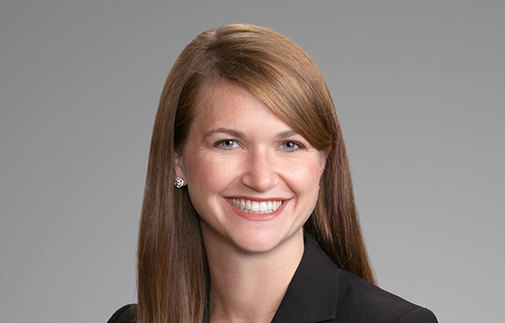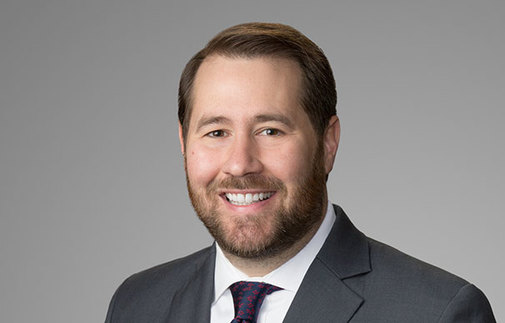Employment/Construction Alert: "New DOL Regulations Clarify Families First Coronavirus Response Act’s COVID-19 Paid Leave Policy"
(April 9, 2020 Update: Department of Labor publishes 29 CFR 826 to promulgate temporary regulations for implementing certain provisions of the Families First Coronavirus Response Act)
On April 6, 2020, the Department of Labor (“Department”) published, at 85 Fed. Reg. 66 (April 6, 2020), temporary regulations for implementing the Families First Coronavirus Response Act (the “Act”) and, more specifically, to ensure consistency between the Emergency Paid Sick Leave Act (“EPSLA”) and the Emergency Family Medical Leave Expansion Act (“EFMLEA”).
The regulations, operational until December 31, 2020, describe, clarify, and interpret the paid leave requirements of the EPSLA and the EFMLEA, previously set out under the Act, the requirements and applicability of which Porter Hedges initially and generally discussed on March 19, 2020.
In light of the April 6, 2020 regulations, the following information provides important updates and clarifications:
Clarification of Definitions
First, the Department clarified two definitional terms: “son or daughter” and “telework.”
Under the first clarification, the Department confirmed both the EPSLA and the EFMLEA should apply when an employee must care for his son or daughter when the child is under 18 years of age or when the child is age 18 or older and incapable of self-care because of a mental or physical disability.
Under the second clarification, the Department confirmed that employees who are “teleworking” for COVID-19 related reasons must always record and be compensated for all hours actually worked, including overtime, i.e., telework is no less work than if it were performed at the employer’s worksite. In this regard, the new regulations encouraged employers and employees to implement highly flexible telework arrangements allowing employees to perform work, potentially at unconventional times, while tending to family and other responsibilities such as teaching children whose schools are closed for COVID-19 related reasons.
Paid Leave Entitlements
As the Act relates to paid leave entitlements, the new regulations considered whether an employee subject to a Federal, State, or local COVID-19 quarantine or isolation order is entitled to sick leave if the business (e.g., a coffee shop) closes temporarily or indefinitely due to a downturn in business related to COVID-19. Under such a circumstance, the Department clarified that the employee may not take paid sick leave because the employer did not have work for the employee. Said differently, the employee would be unable to work even if he or she were not required to comply with the quarantine or isolation order. However, the employee still may be eligible for state unemployment insurance. For employees subject to quarantine or isolation orders but whom can still telework (e.g., lawyers permitted by their law firms to work from home), paid sick leave is not available.
When an employee is experiencing COVID-19 symptoms (fever, dry cough, shortness of breath) and seeking medical diagnosis, the employee may take paid sick leave for time making, waiting for, or attending an appointment for a COVID-19 test; the employee may not take sick leave to self-quarantine without seeking a medical diagnosis.
If the employee is unable to work because they are caring for an individual subject to a Federal, State, or local quarantine or isolation order, or an individual advised by a health care provider to self-quarantine, the Department clarified that the “individual” for whom the employee is caring must be an immediate family member, roommate, or similar person with whom the employee has a relationship creating an expectation that the employee would care for the person if he or she self-quarantined or was quarantined.
Employee Eligibility
The new regulations confirm that all employees are eligible to take paid sick leave under the EPSLA, regardless of how long they have been employed. All employees who have been employed for at least 30 calendar days are eligible for expanded family and medical leave under the EFMLEA, subject to certain exceptions.
Employer Coverage
Under the Act, all private employers employing fewer than 500 employees must, as a general matter, comply with the EPSLA and the EFMLEA. This determination depends on the number of employees at the time an employee would take leave.
As guidance, the Department explained that if an employer had 450 employees on April 20, 2020, and an employee is unable to work starting on that date because a health care provider advised the employee to self-quarantine, the employer must provide paid sick leave to that employee. But if the employer hired 75 new employees between April 21, 2020 and August 3, 2020, such that the employer employed 525 employees on August 3, 2020, the employer would not be required to provide paid sick leave to a different employee who is unable to work for the same reason beginning on August 3, 2020.
Whereas full-time and part-time employees, employees on leave, temporary employees, and day laborers count toward the 500-employee threshold, independent contractors or furloughed employees do not.
Employee Notice of Need for Leave
The April 6, 2020 regulations confirm an employer may require reasonable notice from the employee if leave is needed, such as requiring the employee to comply with the employer’s usual notice procedures and requirements, absent unusual circumstances. If the employee fails to give proper notice, the employer should give him or her notice of the failure and an opportunity to provide the required documentation before denying the request for leave.
Documentation
For the employee to obtain paid sick leave or expanded family and medical leave, the employee must provide supporting documentation for his or her request, including a signed statement containing the employee’s name, date(s) for which leave is requested, the COVID-19 qualifying reason for leave, and a statement representing the employee is unable to work or telework because of the COVID-19 qualifying reason. Depending on the qualifying reason, additional documentation may be required. For example, if the qualifying reason is that a health care provider recommended self-quarantine, the employee must provide the health care provider’s name.
Record Keeping
Employers are required to retain certain documentation (described above) for four years, regardless of whether leave was granted or denied. If an employee provided oral statements to support his or her request, the employer must document and retain such information for four years.
Small Business Exemption
The Department has further clarified how small businesses can qualify for the small business exemption. In our previous alert, we had advised that small businesses with fewer than 50 employees may qualify for exemption from the requirement to provide leave due to school closings or child care unavailability if the leave requirements would jeopardize the viability of the business as a going concern. To elect this small business exemption, an authorized officer of the business must determine whether the business meets one of the below conditions:
- Providing the leave would result in the small business's expenses and financial obligations exceeding available business revenues and cause the employer to cease operating at a minimal capacity;
- The absence of the employee or employees requesting such leave would entail a substantial risk to the financial health or operational capabilities of the employer because of their specialized skills, knowledge of the business or responsibilities; or
- There are not sufficient workers who are able, willing, and qualified, and who will be available at the time and place needed, to perform the labor or services provided by the employee or employees requesting the leave, and these labor or services are needed for the small business to operate at a minimal capacity.
If the business determines that it meets one of these three criteria, it must document why it meets one of these conditions and retain this documentation in its files. The Department has advised that this documentation should not be sent to them at this time.
This exemption only applies to sick leave or The Family and Medical Leave Act (“FMLA”) leave taken due to schools being closed or child care provider unavailability for COVID-19-related reasons. Thus, this exemption does not apply to sick leave taken by employees who are subject to Federal, State, or local quarantine, self-quarantine, experiencing symptoms of COVID-19 and seeking a medical diagnosis, providing care for an individual subject to a Federal, State or local quarantine or isolation, or dealing with a "substantially similar condition."
Intersection of Traditional FMLA and the Expanded FLMA
The regulations explain that an employee may take a total of 12 workweeks for FMLA or expanded family and medical leave reasons during a 12-month period. Thus, if an employee has taken some leave during the current 12-month period determined by the employer, the employee can only take the remaining portion of leave available. If an employee has already taken 12 workweeks of FMLA leave during this 12-month period, the employee may not take additional expanded family and medical leave.
Intermittent Leave
If the employee and employer can reach an agreement, then the employee may be able to take paid sick leave or expanded family and medical leave intermittently depending on the circumstances. “Intermittently” is defined as “in separate periods of time, rather than one continuous period.” This employee/employer intermittent leave agreement can happen in writing or orally, so long as a clear and mutual understanding exists between the parties regarding the ability to take intermittent leave, as well as the increments of time in which leave must be taken. Absent an agreement, no intermittent leave may take place.
Whether an employee may take intermittent leave depends on whether the employee is: (a) reporting to an employer’s worksite or (b) working remotely outside of the office. If the employee is reporting to an employer’s worksite, then the employee may only take intermittent leave if the employee’s son or daughter whose school or place of care is closed or the child care provider is unavailable because of reasons related to COVID-19. However, if the employee usually works from home or is teleworking due to COVID-19, then the employee may take intermittent leave for any qualifying reason, so long as the employee is unavailable to telework because of a COVID-19 related reason. The reason for the distinction is to prevent the further spread of the virus. Under the latter scenario, the employee is not risking any exposure of COVID-19 to the other employees onsite given the employee does not report to the worksite at all.
To calculate the amount of intermittent leave, the employer only includes the amount of leave actually taken. For example, if a forty-hour employee only takes three (3) hours of leave each work day totaling fifteen (15) hours, then the employee has only taken fifteen hours of paid sick leave or 37.5% of a workweek of the employee’s expanded family and medical leave. This is to ensure that employees are able to use the full leave entitlement.
Attorneys
- Partner
- Partner
- Partner



